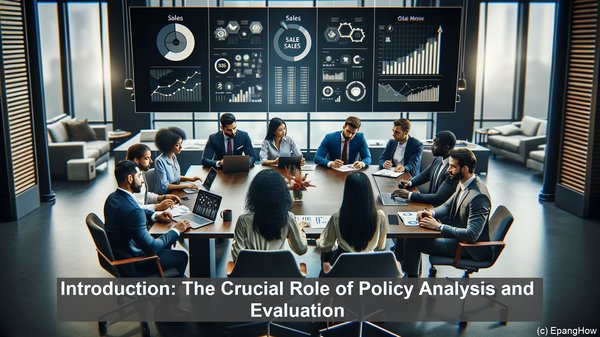Introduction: The Crucial Role of Policy Analysis and Evaluation
Hello everyone, and welcome to today’s article. In the dynamic landscape of public policy, the processes of policy analysis and policy evaluation play pivotal roles. While both involve a systematic examination of policies, they differ in terms of their objectives and the stage at which they are conducted. Let’s delve deeper into these two processes and understand their nuances.
Policy Analysis: Unraveling the Complexities of Policy Formulation
Policy analysis primarily focuses on the formulation stage. It aims to provide policymakers with a comprehensive understanding of a policy’s potential impacts, feasibility, and alternatives. This process involves extensive research, data collection, and the application of various analytical tools. The key objective is to inform the decision-making process by presenting evidence-based insights and recommendations. Policy analysts often employ techniques such as cost-benefit analysis, stakeholder mapping, and scenario planning to assess the viability and effectiveness of a proposed policy.
Policy Evaluation: Assessing the Real-World Outcomes of Policies
While policy analysis is forward-looking, policy evaluation is retrospective in nature. It involves assessing the actual outcomes and impacts of implemented policies. The evaluation process is guided by specific criteria, such as effectiveness, efficiency, equity, and sustainability. Through rigorous data collection, surveys, and interviews, evaluators aim to determine whether a policy has achieved its intended objectives and whether any unintended consequences have emerged. This information is crucial for policymakers as it helps them understand the need for course corrections or modifications in existing policies.

Interconnectedness: How Policy Analysis and Evaluation Inform Each Other
Although policy analysis and evaluation are distinct processes, they are interconnected and often inform each other. The insights gained from policy evaluation can provide valuable inputs for future policy analysis. For example, if an evaluation reveals that a particular policy has not achieved its desired outcomes, this information can guide the formulation of alternative policies or the modification of existing ones. On the other hand, the recommendations and insights generated through policy analysis can shape the evaluation process by identifying the key indicators and metrics to be assessed.

